A human-friendly, giant insect hotel emerged in the middle of the city
Alusta, built from clay and populated by plants, is a sanctuary for pollinators and a meeting place for all living things
Story Minna Hölttä, translation Annika Rautakoura, videos Anna Berg, photos Anne Kinnunen, Elina Koivisto and Maiju Suomi

Your gaze is fixed first upon the plants running wild and bright between the hundred-year old stone houses. But then your attention is grabbed by a crow chick.
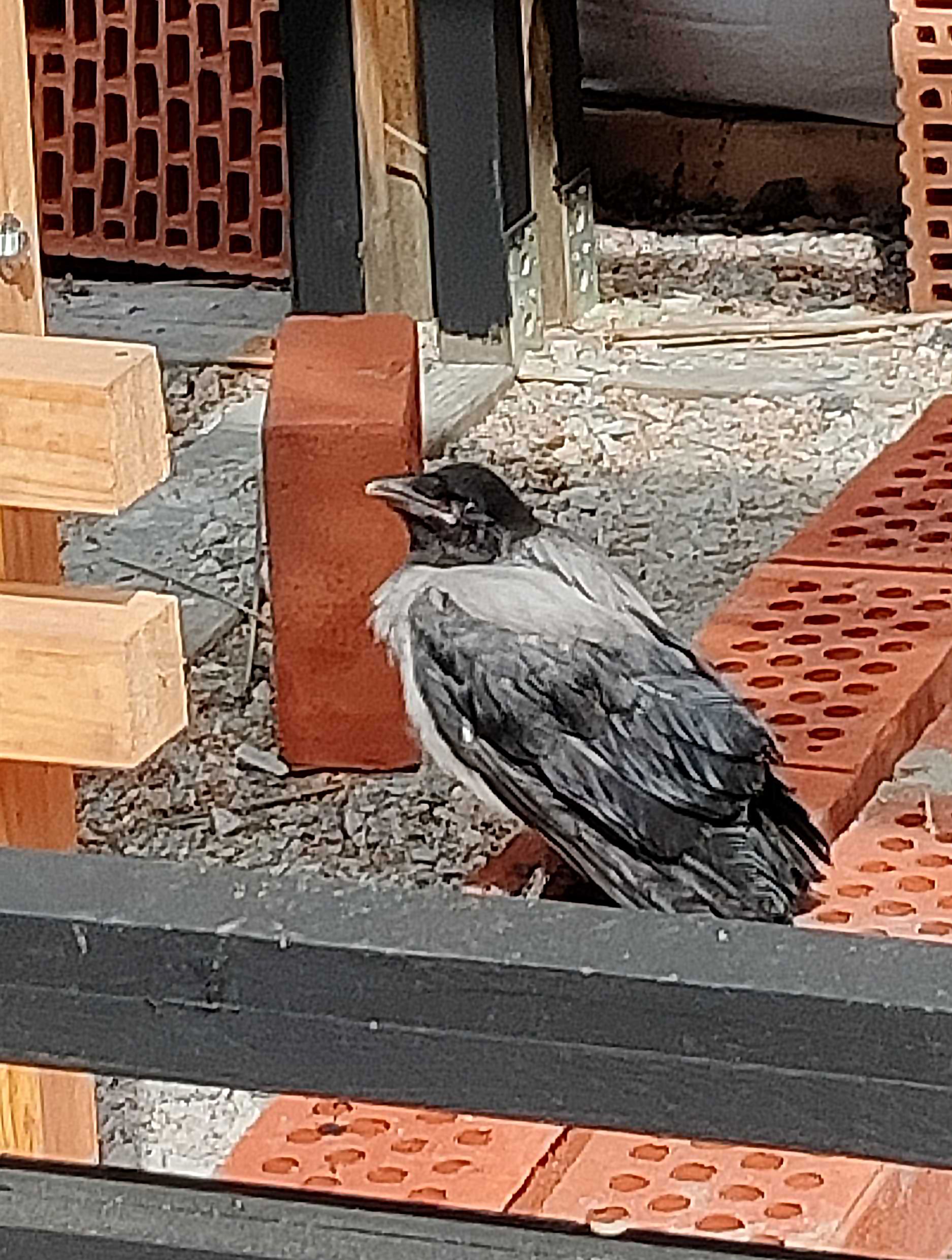
Photo Minna Hölttä
Photo Minna Hölttä
Friends call it Armi, short for Arminius, reveal architects Maiju Suomi and Elina Koivisto. It turns out that Armi is a regular guest at the Alusta pavilion.
Alusta is a meeting place based on Suomi and Koivisto’s idea, built in central Helsinki in the courtyard between the Museum of Finnish Architecture and the Design Museum.
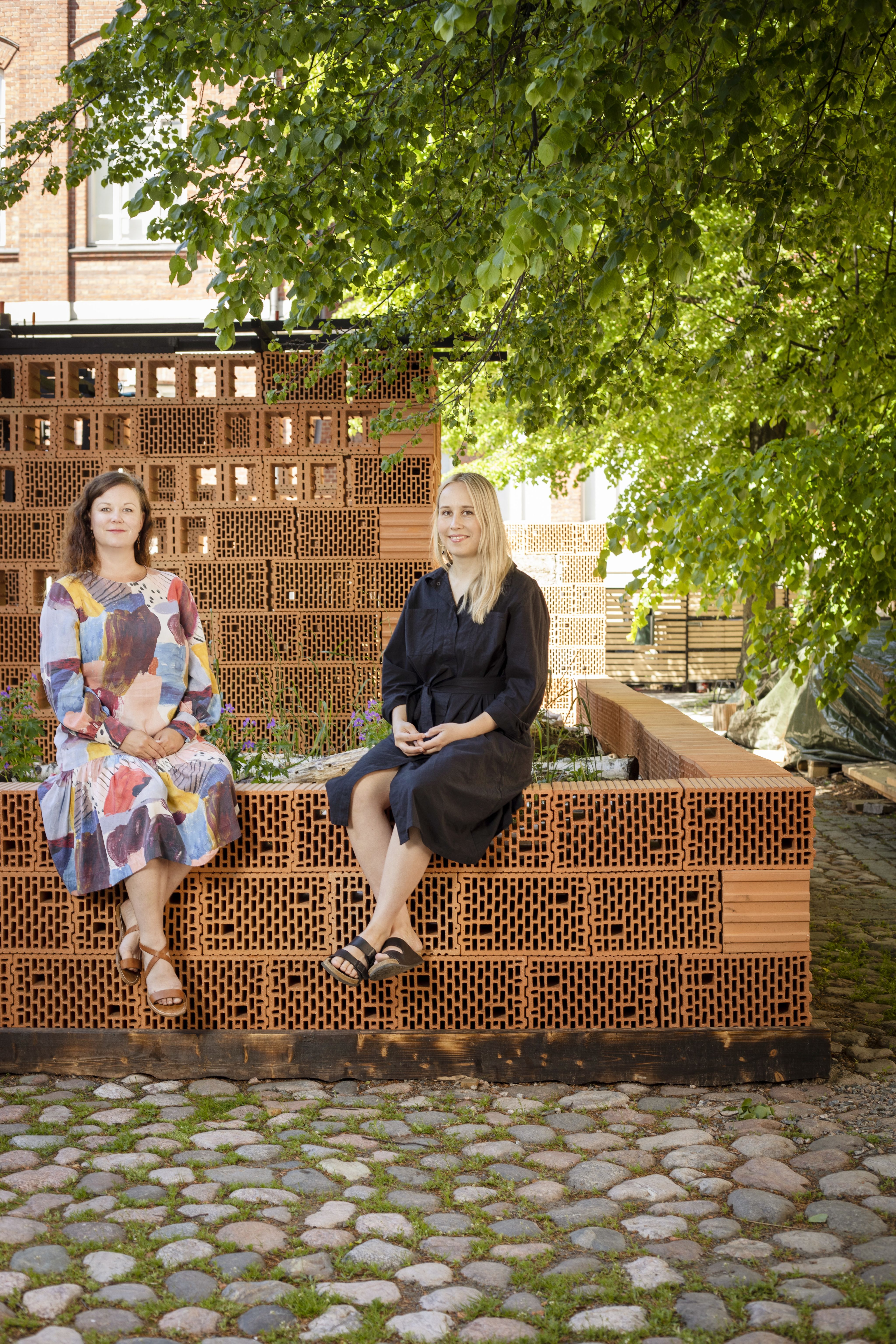
Elina Koivisto and Maiju Suomi. Photo: Anni Koponen
Elina Koivisto and Maiju Suomi. Photo: Anni Koponen
Koivisto points to a large crow perched on a lamp post and observing the situation. ‘We asked Korkeasaari zoo and they told us that we shouldn’t be concerned about a lonely chick – the mother is close by and occasionally brings it food.’

Armi briskly pokes the coarse woody debris with its beak and grabs a snack. It has already figured out how Alusta works.
Plant splendour in a parking lot
The paved courtyard has low walls made of clay. They form seats and paths, framing large grow bags containing over a thousand large and small plants.
A couple of months ago the place looked completely different, Suomi says. The courtyard operated mostly as a parking lot.
The construction process included rammed earth masonry, along with fired and unfired bricks. Some bricks have been laid on their side so the walls have holes.
‘Many visitors have commented that this is like a giant insect hotel,’ Suomi smiles. The description is fitting but doesn’t give the whole story.
Alusta pavilion is part of the Academy of Finland’s BIWE project, which seeks to restore biodiversity in densely populated areas. A rich diversity of plants and animals is a prerequisite for all life – and is now critically endangered. According to The Intergovernmental Science-Policy Platform on Biodiversity and Ecosystem Services (IBPES), one million plant and animal species around the world face extinction.
Biodiversity is particularly harmed by the reduced availability of living environments and their increased fragmentation and lack of variety. One goal of the Alusta pavilion is to reconnect humans and nature by offering pollinators shelter and food in the middle of the city.
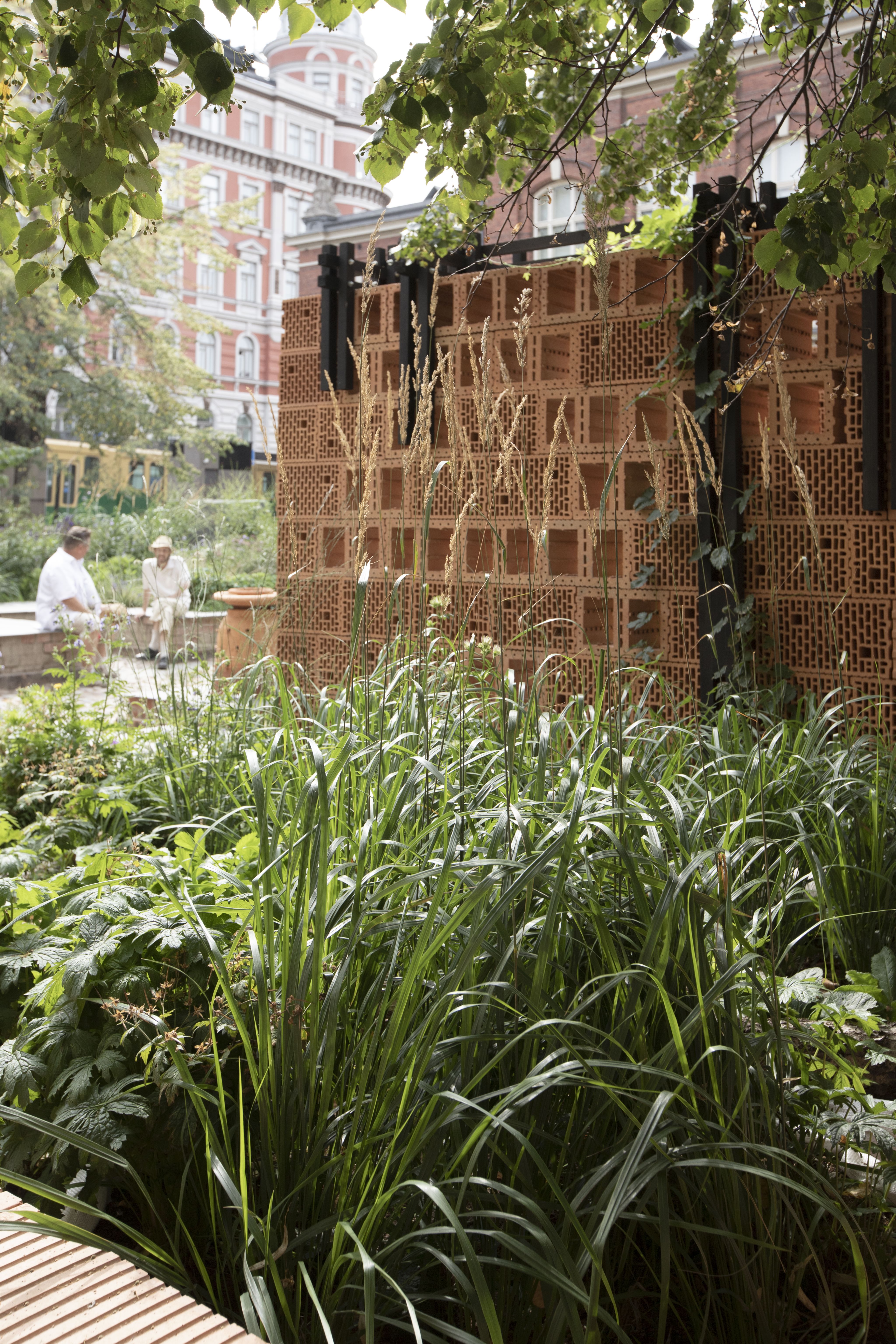
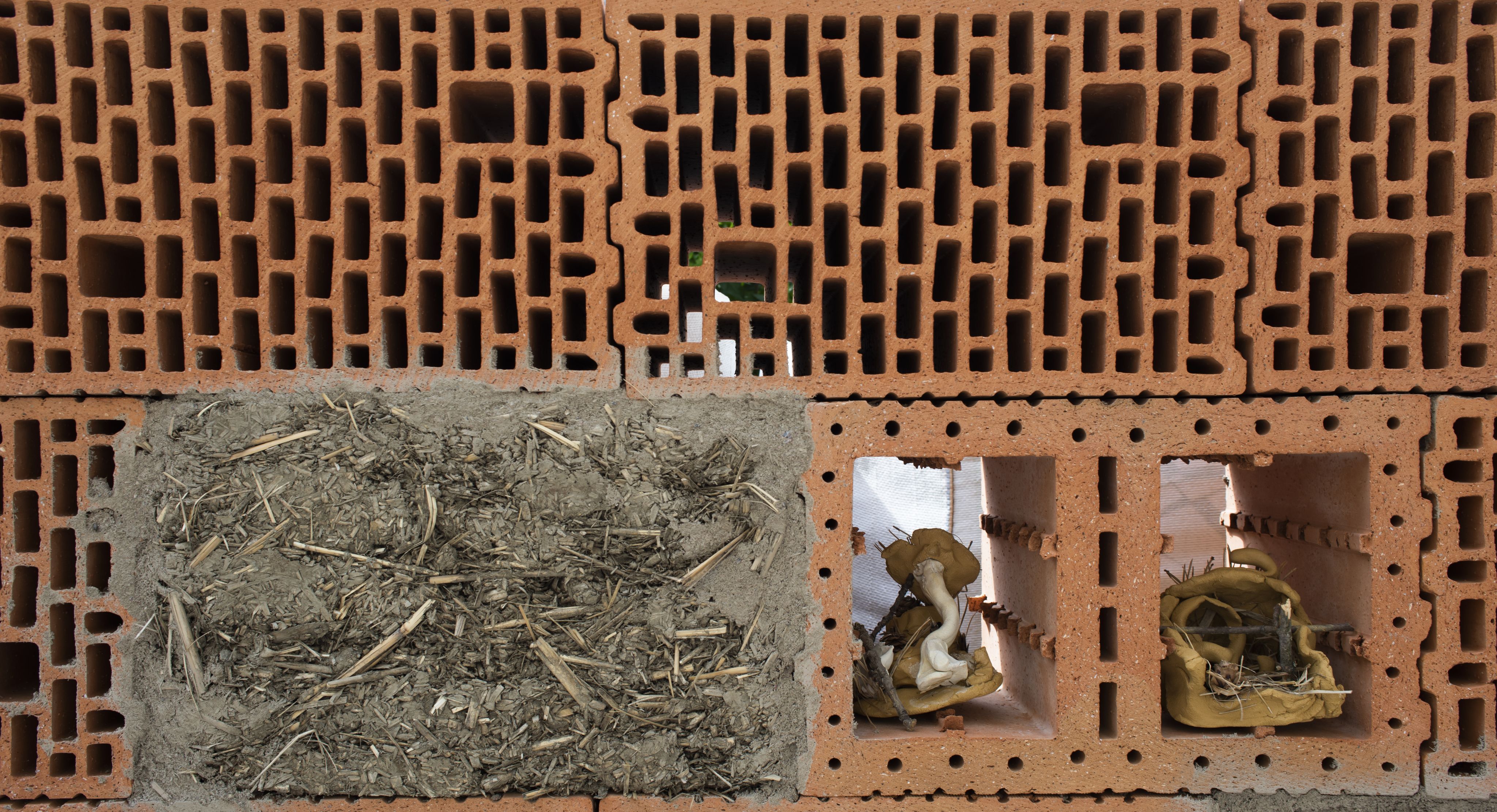
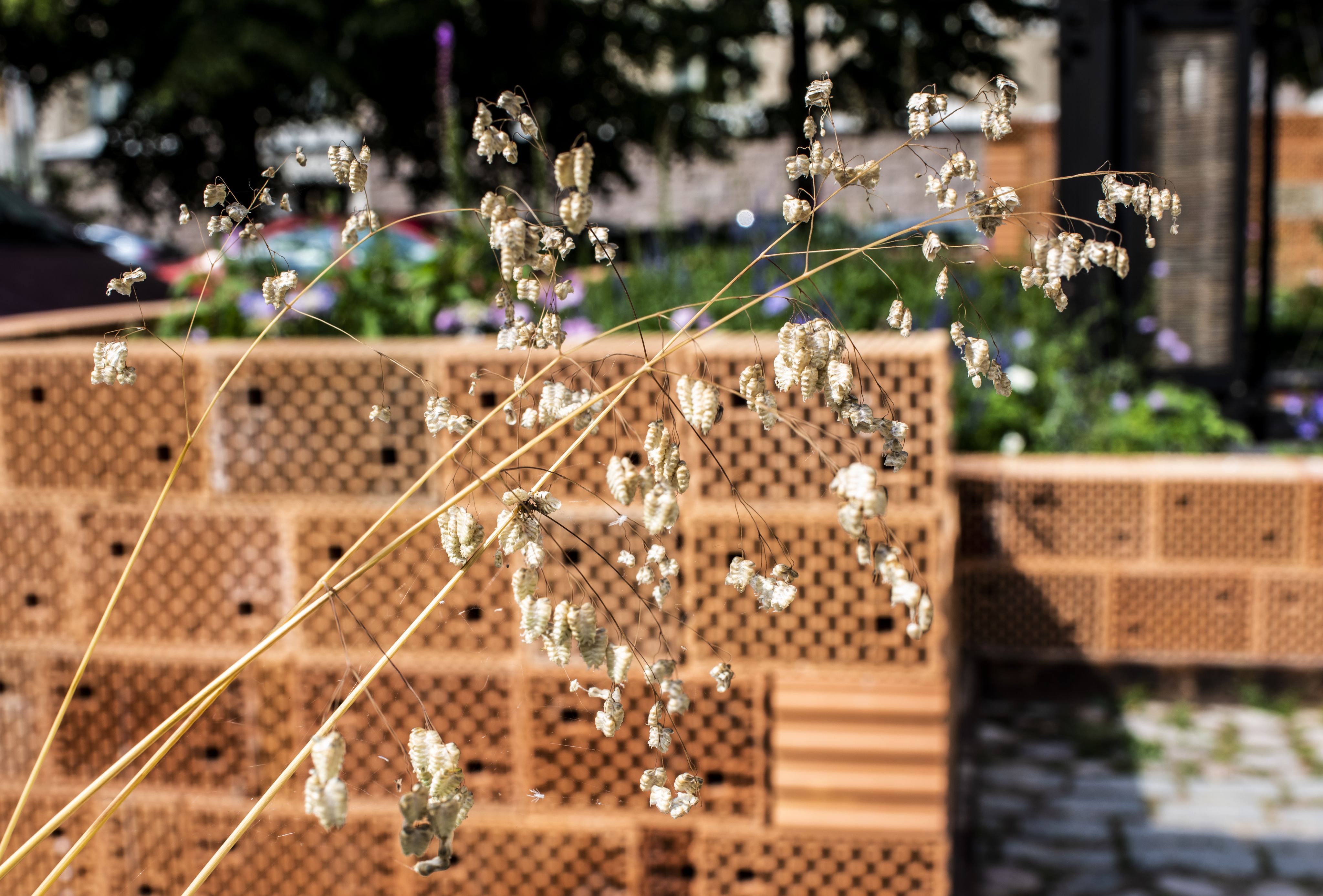
At the very beginning of the design process, Maiju Suomi and Elina Koivisto contacted ecology researchers at the University of Helsinki. The researchers explained that if the right plants were available, downtown Helsinki would attract insects like solitary bees, different butterflies and bumblebees.
Because pollinators are not omnivores, different types of plants were needed. Suomi and Koivisto received a long list of the most suitable wild plants and garden perennials from ecologist Johanna Huttunen and used it to select a range of plants that would flower throughout the season. Many of them also keep their seed heads over the winter, which offers shelter to animals and seeds for birds after the growing season.
The ecologists also recommended adding logs with fungi at Alusta. The fungi break the wood down, producing homes and nourishment for various insects. ‘The idea is that once the construction is done, nature will take over and finish building it,’ Suomi says.
Elina Koivisto and Maiju Suomi point out that biodiversity can be promoted on many levels, from land use to urban and construction planning. More diverse urban nature also increases well-being and alleviates extreme phenomena related to climate change.

Beneficial materials
Alusta pavilion will be open until the end of summer 2023. After that, the construction will be dismantled, the materials will be recycled, and the plants will continue their lives elsewhere.
Temporary structures are usually made of wood, which is light and easy to transport. Wood is also considered an ecological construction material. But Koivisto points out that it’s not a silver bullet that can solve all of the challenges in construction.
‘When it comes to construction materials, you always need to consider their origin and processing methods, how they operate in a building, and what happens to them afterwards.’
Forests contain the world’s largest variety of species. Finland’s forests alone are home to 20,000 species: mammals, birds, insects, plants and mushrooms. The Amazon rainforest contains over three million species. Increased logging is reducing biodiversity and eating away at carbon sinks.
Clay is extracted from the surface layers of the soil, right below humus, and unlike calcium oxide does not require deep mines. Many clay extraction spots are former agricultural fields which can later be turned into bird ponds.
In Finland, clay can be found in the gardens of quite a few homes or summer houses. It is an ancient construction material that is affordable and easy to work. Fired clay bricks can be recycled, and unfired clay can be crumbled back into nature.
Clay also purifies the air and balances humidity. According to the Ecosafe project of the Ministry of the Environment and Finnish universities and companies, mixing clay into the wood shavings [eSS1] used for heat insulation reduced the total volatile organic compounds (tVOC) to nearly zero.
‘Building sites contain materials that can cause chemical burns if handled without full protective gear. Clay, on the other hand, is so safe that it can be eaten. We’re used to measuring the toxicity of construction materials with their maximum tolerated limits. What if we sought alternatives that aren’t harmful at all or which are even beneficial?’ Koivisto says.
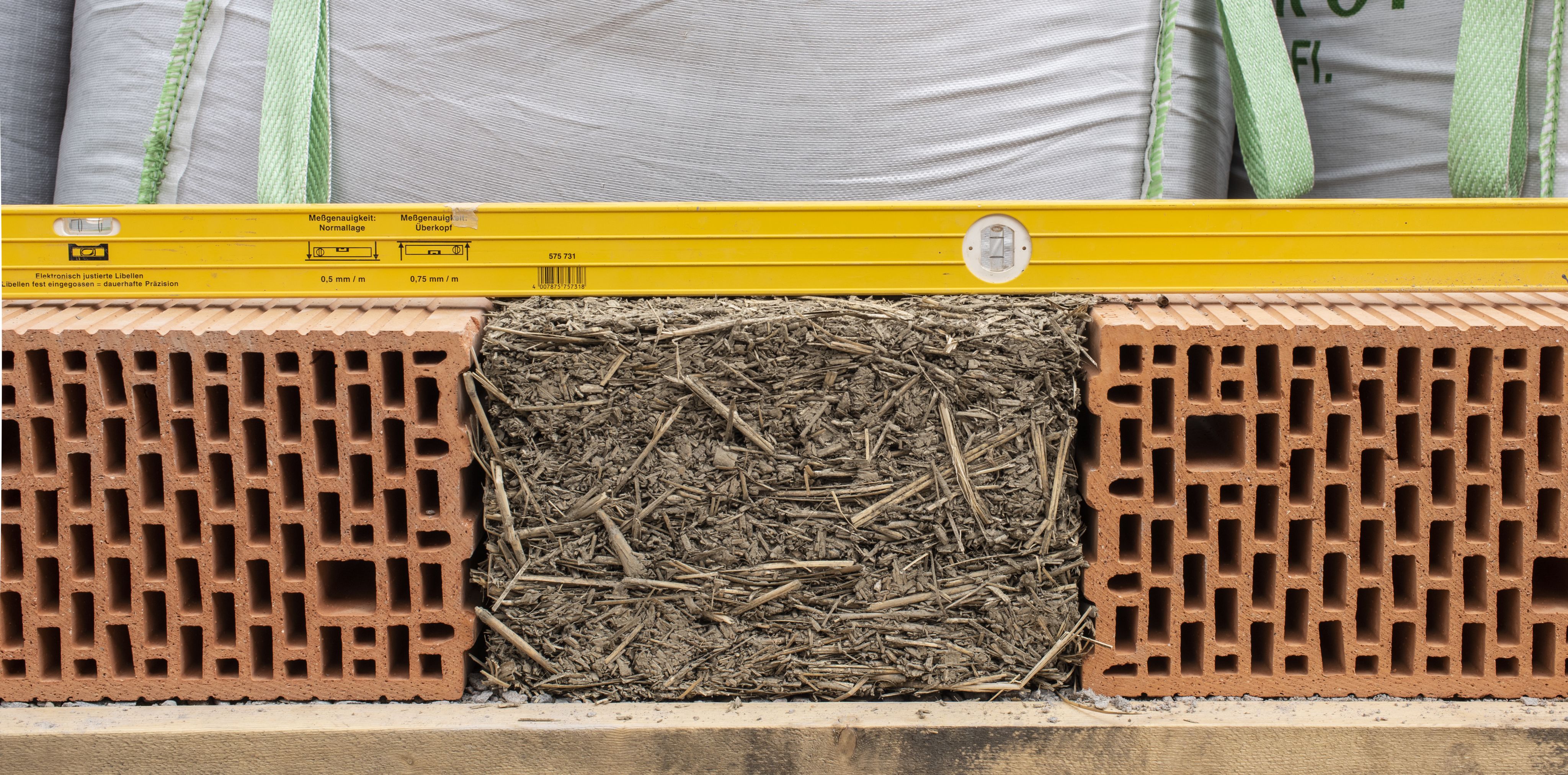
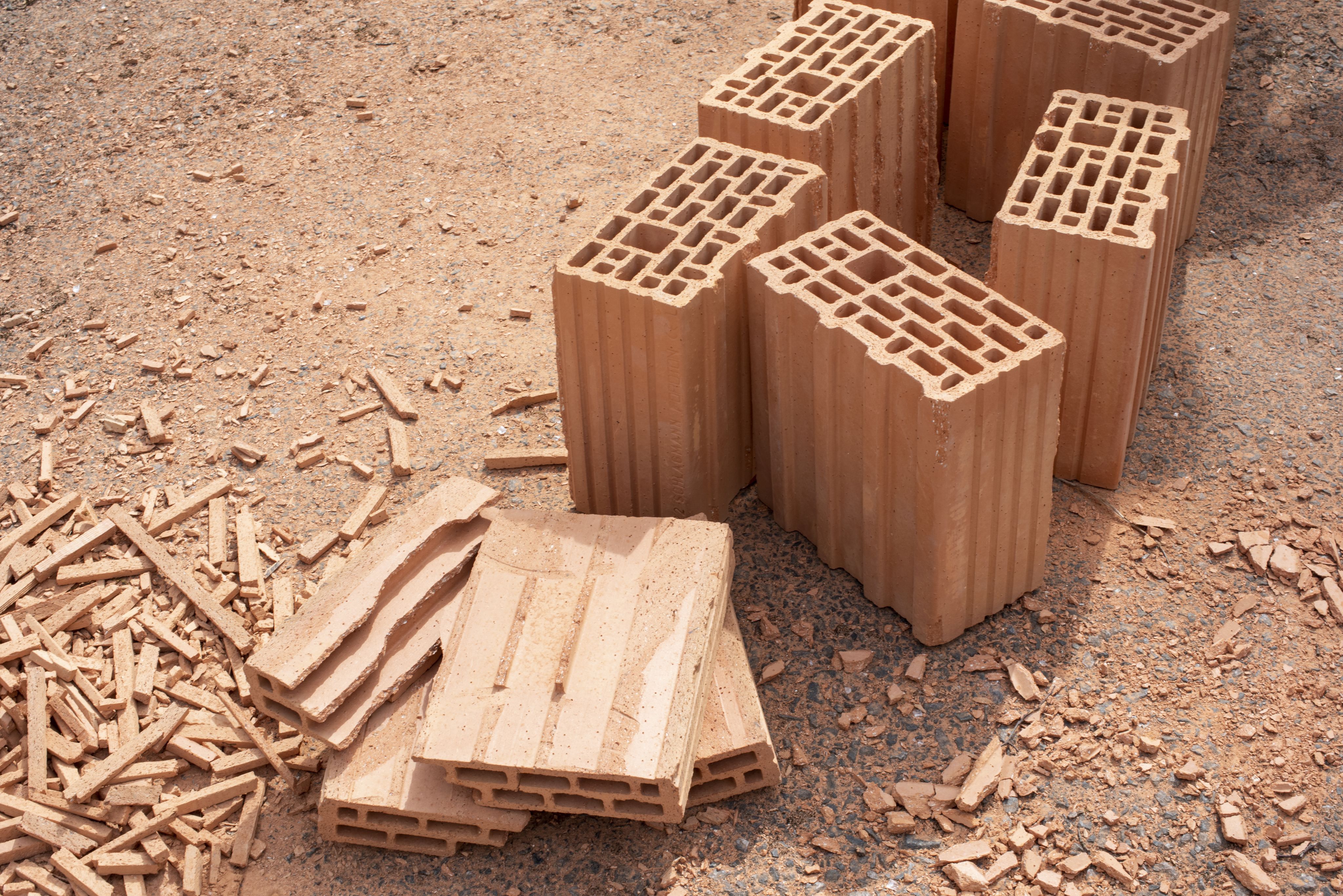

Disgust, interest, care
The sunlit clay wall is a good place to sit. An earthy scent fills the air, and the rugged surface of the wall feels good to touch. Architecture can be healing in many ways.
Suomi and Koivisto describe current architecture as focused on the visual. Because sight operates at a distance, architecture can easily remain remote, as beautiful images in magazines and on Instagram.
Kind of like our relationship with nature, Suomi and Koivisto say.
Alusta provided them with an opportunity to produce experimental, ambitious, and ecological architecture which involves different senses and doesn’t isolate nature and humans from one another. It had been a long-term dream for both. Large agencies seemed to operate painfully slowly, and teaching didn’t involve enough practical work.
Suomi clearly remembers it the moment when the idea came to life. ‘I was sitting in a garden reading a book and drinking coffee. There was a clay pot next to me, and I discovered lots of worms beneath it. My first reaction was disgust, but when I slowed down to simply enjoy the summer day, I began to follow the worms’ movements with interest. I went back to my book and coffee, but then when the worms were gone I found myself missing them. I began to ponder if we could build a place to repeat that experience – where I could move from disgust to interest and caring.’
The pavilion was named after the notion of having to think things over from the beginning, or ‘alusta’ in Finnish. The word also denotes a platform, in this case for environmental discussion, collaboration, and different events.
A total of 50 architecture students took part in building Alusta. It has already hosted children’s clay workshops and ‘ötköt’, a bug party by art education students in which visitors set the table for insects. The pavilion is also hosting a series of lectures on nature-culture relations, covering topics such as architecture and empathy, emotions caused by the environmental crisis, and care in architecture.

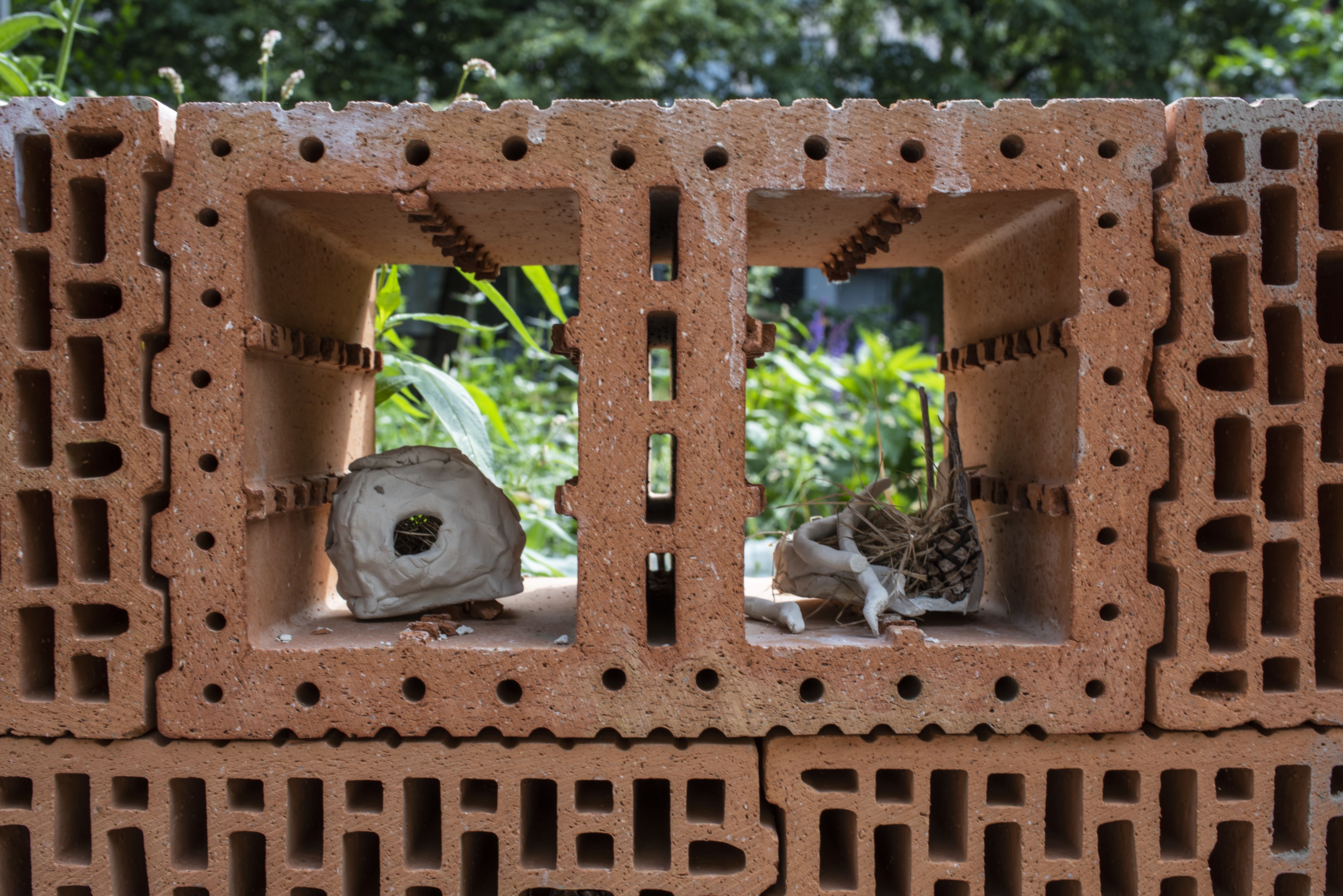
‘Care is a very important word,’ says Maiju Suomi. ‘It means to care and look after and to carry the weight of concern and worry. We wanted to create a sanctuary for processing environmental anxiety and opening oneself up to new ideas, such as the notion that every insect and crow chick has intrinsic value in this world.’
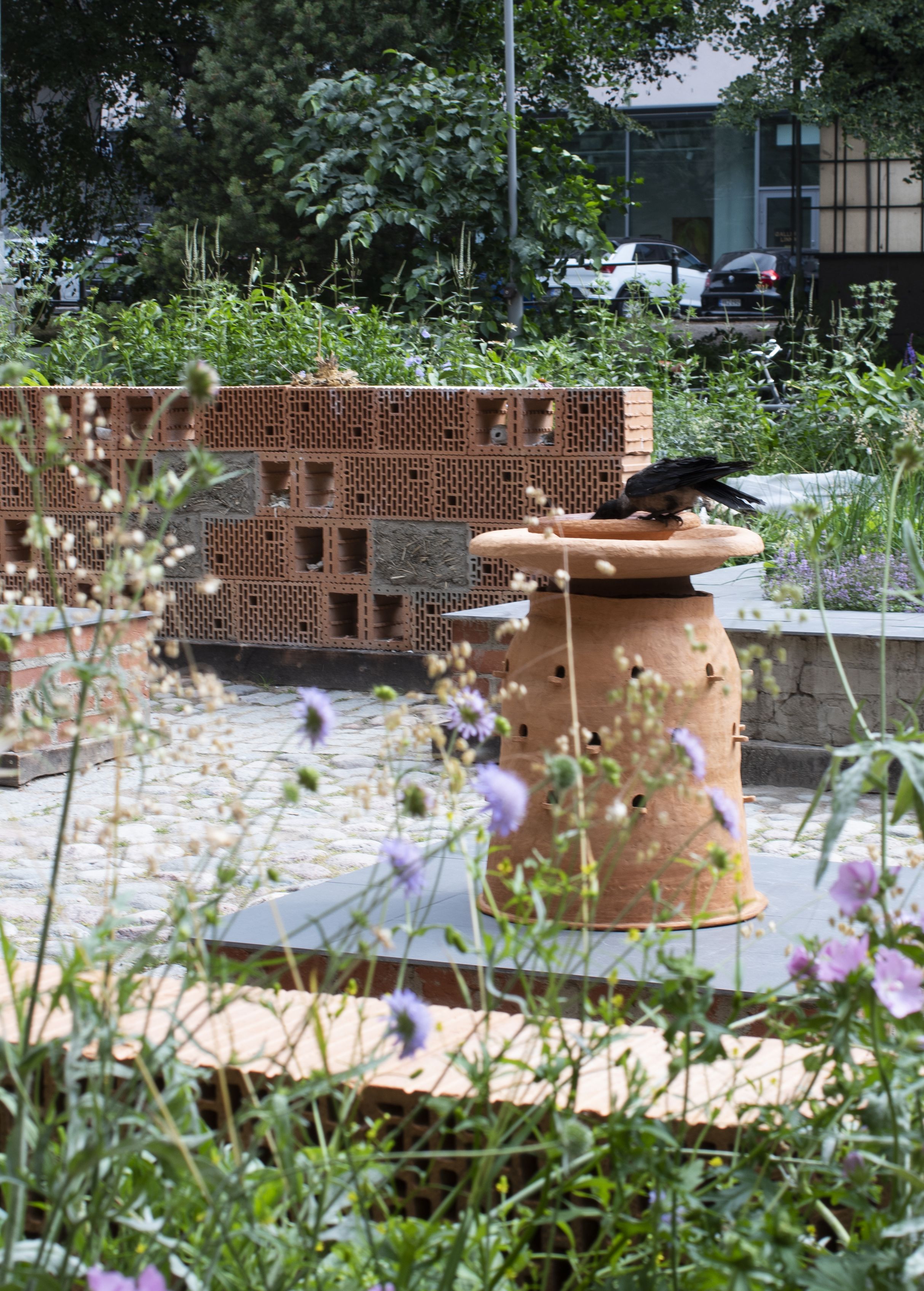
Alusta is part of architect Maiju Suomi’s artistic research for her doctoral thesis at Aalto University’s Department of Design. It also serves as a test laboratory for architect Elina Koivisto’s research on the use of natural materials in construction. Elina Koivisto also works as a University Teacher of Building Technology at Aalto.
Alusta was realised in collaboration with the clay construction program of the Raisio Regional Education and Training Consortium. The project was supported by Wienerberger Oy, Kekkilä Oy, Fiskars, ABL-laatat, The Organic Gardener’s Association (Hyötykasviyhdistys), Iki Carbon, Ilmarinen, Kääpä Biotech, Stark Suomi Oy and Uula Color Oy.
The project’s design and execution was funded by the Alfred Kordelin Foundation, Arts Promotion Center Finland and the Greta and William Lehtinen Foundation.
Alusta participates in Aalto University's Designs for a Cooler Planet exhibition.
